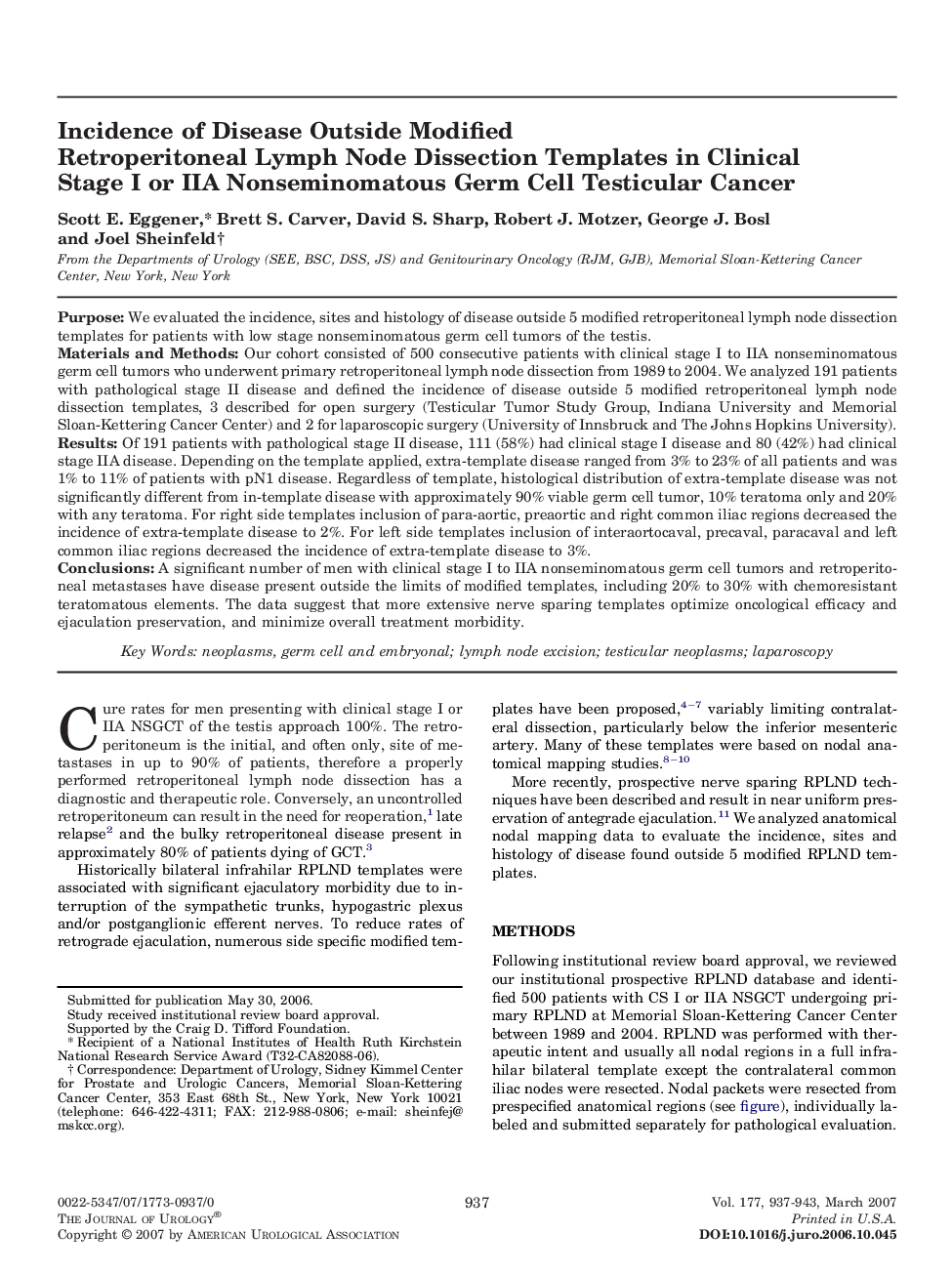| Article ID | Journal | Published Year | Pages | File Type |
|---|---|---|---|---|
| 3878960 | The Journal of Urology | 2007 | 7 Pages |
PurposeWe evaluated the incidence, sites and histology of disease outside 5 modified retroperitoneal lymph node dissection templates for patients with low stage nonseminomatous germ cell tumors of the testis.Materials and MethodsOur cohort consisted of 500 consecutive patients with clinical stage I to IIA nonseminomatous germ cell tumors who underwent primary retroperitoneal lymph node dissection from 1989 to 2004. We analyzed 191 patients with pathological stage II disease and defined the incidence of disease outside 5 modified retroperitoneal lymph node dissection templates, 3 described for open surgery (Testicular Tumor Study Group, Indiana University and Memorial Sloan-Kettering Cancer Center) and 2 for laparoscopic surgery (University of Innsbruck and The Johns Hopkins University).ResultsOf 191 patients with pathological stage II disease, 111 (58%) had clinical stage I disease and 80 (42%) had clinical stage IIA disease. Depending on the template applied, extra-template disease ranged from 3% to 23% of all patients and was 1% to 11% of patients with pN1 disease. Regardless of template, histological distribution of extra-template disease was not significantly different from in-template disease with approximately 90% viable germ cell tumor, 10% teratoma only and 20% with any teratoma. For right side templates inclusion of para-aortic, preaortic and right common iliac regions decreased the incidence of extra-template disease to 2%. For left side templates inclusion of interaortocaval, precaval, paracaval and left common iliac regions decreased the incidence of extra-template disease to 3%.ConclusionsA significant number of men with clinical stage I to IIA nonseminomatous germ cell tumors and retroperitoneal metastases have disease present outside the limits of modified templates, including 20% to 30% with chemoresistant teratomatous elements. The data suggest that more extensive nerve sparing templates optimize oncological efficacy and ejaculation preservation, and minimize overall treatment morbidity.
